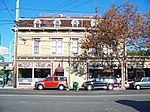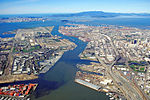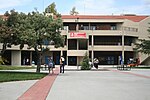The San Francisco Bay Area, often referred to as simply the Bay Area, is a populous region surrounding the San Francisco, San Pablo, and Suisun Bay estuaries in Northern California. Although the exact boundaries of the region are variously defined, the Bay Area is defined by the Association of Bay Area Governments to include the nine counties that border the aforementioned estuaries: Alameda, Contra Costa, Marin, Napa, San Mateo, Santa Clara, Solano, Sonoma, and San Francisco. Other definitions may exclude parts of or even entire counties, or expand the boundaries to include neighboring counties that do not border the bay such as Santa Cruz and San Benito (more often included in the Central Coast regions); or San Joaquin, Merced, and Stanislaus (more often included in the Central Valley).Home to approximately 7.75 million people, Northern California's nine-county Bay Area contains many cities, towns, airports, and associated regional, state, and national parks, connected by a complex multimodal transportation network. The larger federal classification, the combined statistical area of the region which includes fourteen counties, is the second-largest in California (after the Greater Los Angeles area), the fifth-largest in the United States, and the 41st-largest urban area in the world with 9.67 million people. The Bay Area's population is ethnically diverse: roughly three-fifths of the region's residents are Hispanic, Asian, African American, or Pacific Islander (with the other two-fifths being non-Hispanic White American), all of whom have a significant presence throughout the region.
The earliest archaeological evidence of human settlements in the Bay Area dates back to 8000–10,000 BCE (from shell mounds in the Coyote Hills). In 1769, the Bay Area was inhabited by the Ohlone people when a Spanish exploration party led by Gaspar de Portolá entered the Bay – the first documented European visit to the Bay Area. After Mexico established independence from Spain in 1821, the region was briefly controlled by the Mexican government until the United States seized the territory in 1846 during the Mexican–American War. Soon after, discovery of gold in California attracted a flood of treasure seekers, many using ports in the Bay Area as an entry point. During the early years of California's statehood, state legislative business rotated between three locations in the Bay Area before a permanent state capital was established in Sacramento. A major earthquake leveled the city of San Francisco and environs in 1906, but the region quickly rebuilt in time to host the 1915 Panama-Pacific Exposition. During World War II, the Bay Area played a major role in America's war effort in the Asiatic-Pacific Theater, with the San Francisco Port of Embarkation, of which Fort Mason was one of fourteen installations and location of the headquarters, acting as a primary embarkation point for American forces. In 1945, the United Nations Charter was signed in San Francisco, establishing the United Nations, and in 1951, the Treaty of San Francisco re-established peaceful relations between Japan and the Allied Powers. Since then, the Bay Area has experienced numerous political, cultural and artistic movements, developing unique local genres in music and art and establishing itself as a hotbed of progressive politics. Economically, the post-war Bay Area saw huge growth in the financial and technology industries, creating a vibrant and diverse economy with a gross domestic product of over $700 billion, and home to the third-highest concentration of Fortune 500 companies in the United States (as of 2018).Despite its urban character, the San Francisco Bay is one of California's most ecologically important habitats, providing key ecosystem services such as filtering pollutants and sediments from the rivers and supporting a number of endangered species. In addition, the Bay is known for its stands of coast redwoods, many of which are protected in state and county parks. The region is additionally known for the complexity of its landforms, the result of millions of years of tectonic plate movements. Because the Bay Area is crossed by six major earthquake faults, the region is particularly exposed to hazards presented by large earthquakes. The climate is temperate and generally very mild, and is conducive to outdoor recreational and athletic activities such as hiking, running, and cycling. The Bay Area is host to six professional sports teams and is a cultural center for music, theater, and the arts. It is also host to higher education institutions, including research universities such as Stanford University and the University of California, Berkeley. Home to 101 municipalities and nine counties, governance in the Bay Area involves numerous local and regional actors, often with broad and overlapping responsibilities. Over time, droughts and wildfires have increased in frequency and become less seasonal and more year-round, further straining the region's water security.








